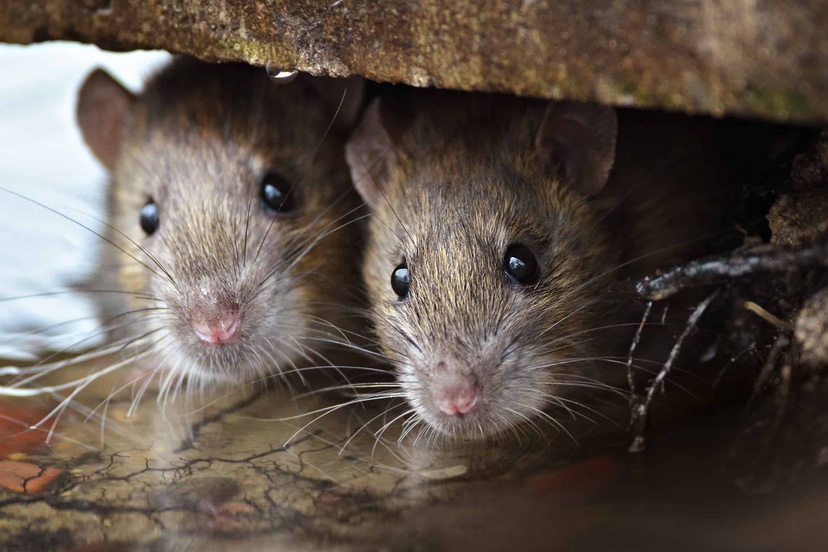Back in about 1983, I took my kids to see an animated film called The Secret of NIMH, about some hyper-intelligent rats struggling to save their small rural settlement from intrusive humans.
The rodents had developed their hyper-intelligence while serving as lab rats in a National Institute of Mental Health (NIMH) experiment.
The film had been adapted from an award-winning 1971 children’s book by Robert C. O’Brien, titled Mrs. Frisby and the Rats of NIMH..
Mrs. Frisby, a fairly ordinary farmyard rat who also happens to be a widow, needs to quickly find a way to move her home and her sick child, before Farmer Fitzgibbons plows the field where they live. On the advice of a wise owl (who, in nature, would likely have made a meal of Mrs. Frisby) she seeks help from the rats who live in the rosebush. There she finds a clan of escaped lab rats from the NIMH experiment who have a literate, mechanized society. They have technology such as elevators, have tapped into Farmer Fitzgibbons’ electrical grid to provide lighting and heating, and have acquired other useful skills, such as storing food for winter.
You could almost call them ‘human’. Like, for example, the humans living in Pagosa Springs.
The lab rats’ increased intelligence and strength had allowed them to escape from the NIMH laboratory and migrate to their present location on a rural farm. At the risk of spoiling the film and the book, Mrs. Frisby’s house and her child are ultimately saved by technology.
Some residents currently living in Pagosa Springs may feel like they’ve successfully escaped from a lab experiment called “The Big City”. Whether that was due to hyper-intelligence, or just plain dumb luck, will probably be discussed in this editorial series.
As our Daily Post readers may already know, the National Institute of Mental Health did in fact engage in a series of laboratory experiments involving rodents, between 1958 and 1974, conducted partly in a modified barn in Gaithersburg, Maryland, and headed up by scientist and ecologist Dr. John B. Calhoun.
Dr. Calhoun had become interested in rodents as a young Ph.D. when he was hired to help with an earlier experiment, conducted in the alleys of Baltimore, Maryland, during World War II. The U.S. Office of Scientific Research and Development had initiated the experiment based on fears that the Axis powers were developing biological weapons — a more deadly strain of plague, for example? — that could be delivered by rats. The experiment involved a new rat poison that successfully killed “well over a million rats” in Baltimore… until the rats got wise to it and stopped eating the poisoned corn.
These were not hyper-intelligent rats. Just ordinary street rats. But they had apparently figured out the poison game.
The scientists, in frustration, decided to do something intelligent: try and understand the life, habits and motivations of rats. They discovered that Baltimore’s Norway rat population lived in clan groups of about 15 individuals. They didn’t like to cross streets, liked staying close to home, and that about ten clans occupied a typical city block. So, about 150 rats per block.
The scientists also found that the number per block hardly fluctuated. If a number of rats were killed — by poison, for example — the block’s population quickly rebounded to 150, and then stayed there.
Almost as if the rats were controlling their own population… and that 150 was some kind of magic number…
Young John Calhoun had an interesting idea. He talked his bosses into letting the team try a slightly different experiment. They trapped more than 100 rats, marked them, and released them into one particular city block. When the team went looking for the marked rats, they were nowhere to be found. Also, the block’s original population had decreased below the 150 rat threshold.
Almost as if a war had taken place… and only the survivors remained?
One account of the experiment concluded: “It looked as if the most effective rat killer was more rats.”
As you might have guessed by now, this editorial series will be looking at possible similarities between human societies and rodent societies.
Dr. Calhoun would spend the rest of his professional career studying rodent societies, but in more controlled settings. Instead of observing rats in the back alleys of Baltimore, he acquired funding to build a simulated, fenced city block in Towson, Maryland, where he could easily and comprehensively observe the rat lifestyle.
He began his experiment with five males and five females. The Towson rats in their fake city were supplied with essentially unlimited food, and by the end of 18 months, the compound had grown to 150 individuals.
And then abruptly leveled off.
By this point, Dr. Calhoun had a pretty good understanding of rat society and its dynamics within the Towson compound. In the four rat clans that occupied the center of ‘town’, closest to the food bins, a few dominant and privileged male rats kept harems of females, who were having babies and raising successful families.
The rats in the outskirts of town — the other seven clans — lived highly stressed lives. When they tried to access the food in the central bins, they had to fight with the privileged males, and were often repulsed. The low-ranking males took to roaming the outskirts of the city, harassing the females from burrow to burrow. The low-ranking females were so exhausted that they rarely conceived, and if they did give birth, they often abandoned their pups.
Not a very pleasant situation, for most of the rats. But it kept the population in check.
This sounds to me a little bit like modern-day America. Maybe even modern-day Pagosa Springs?
Read Part Two…

